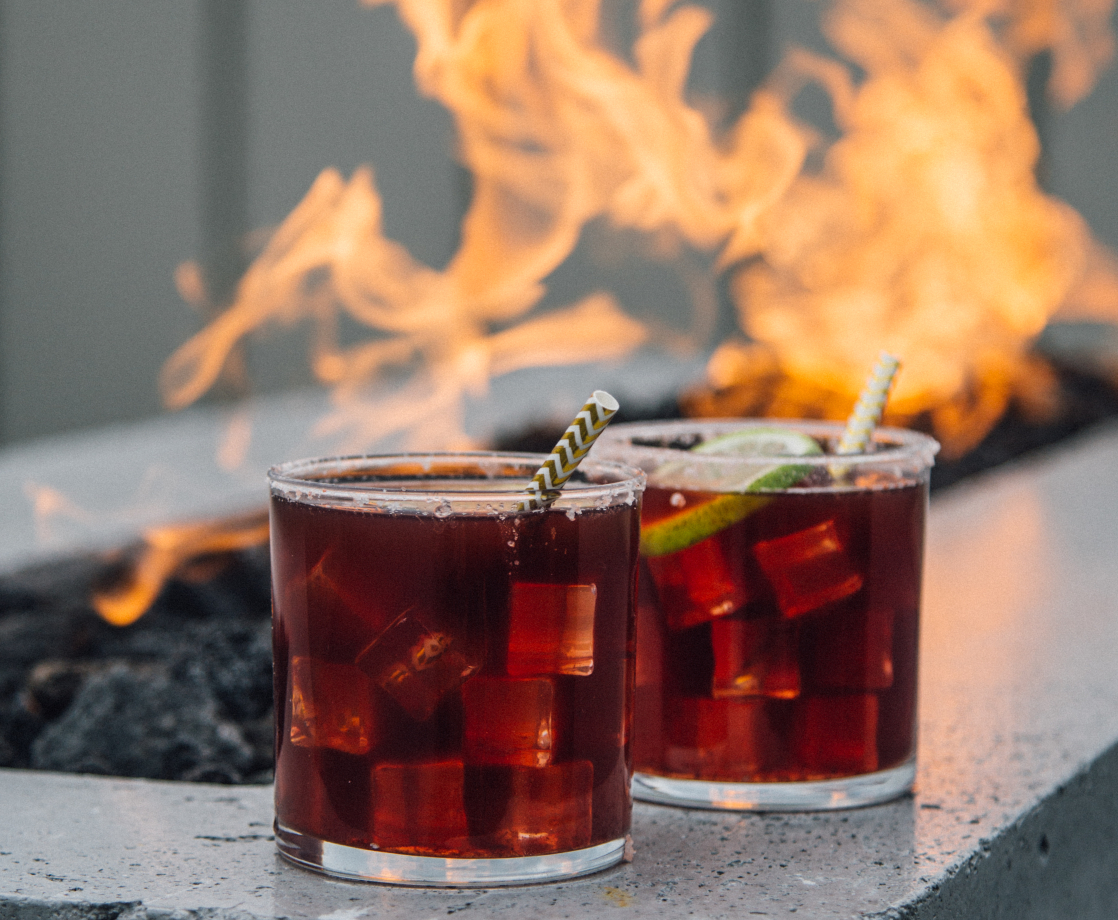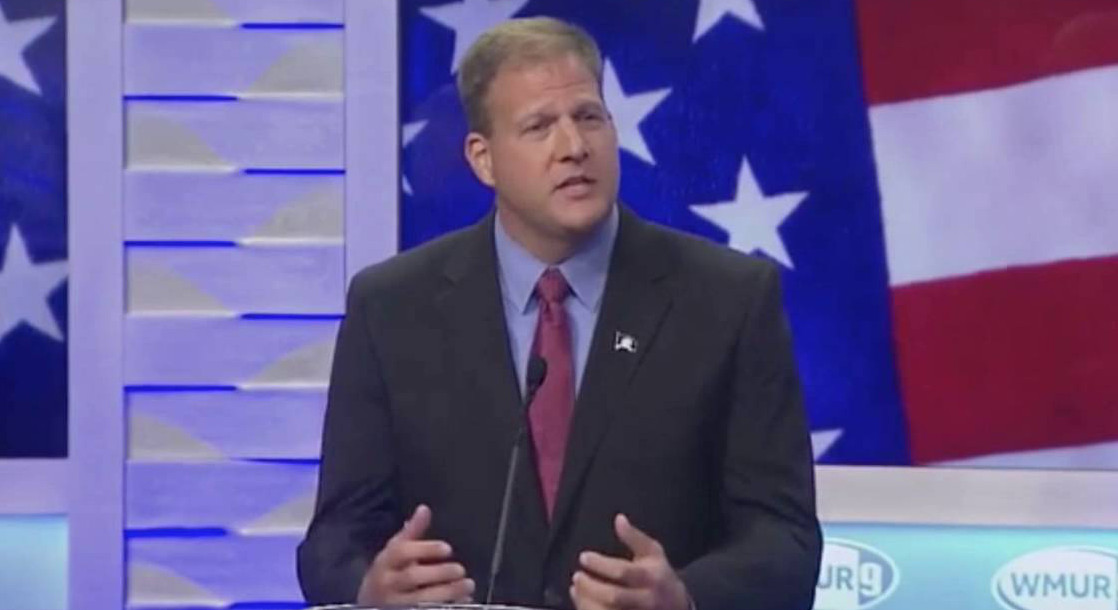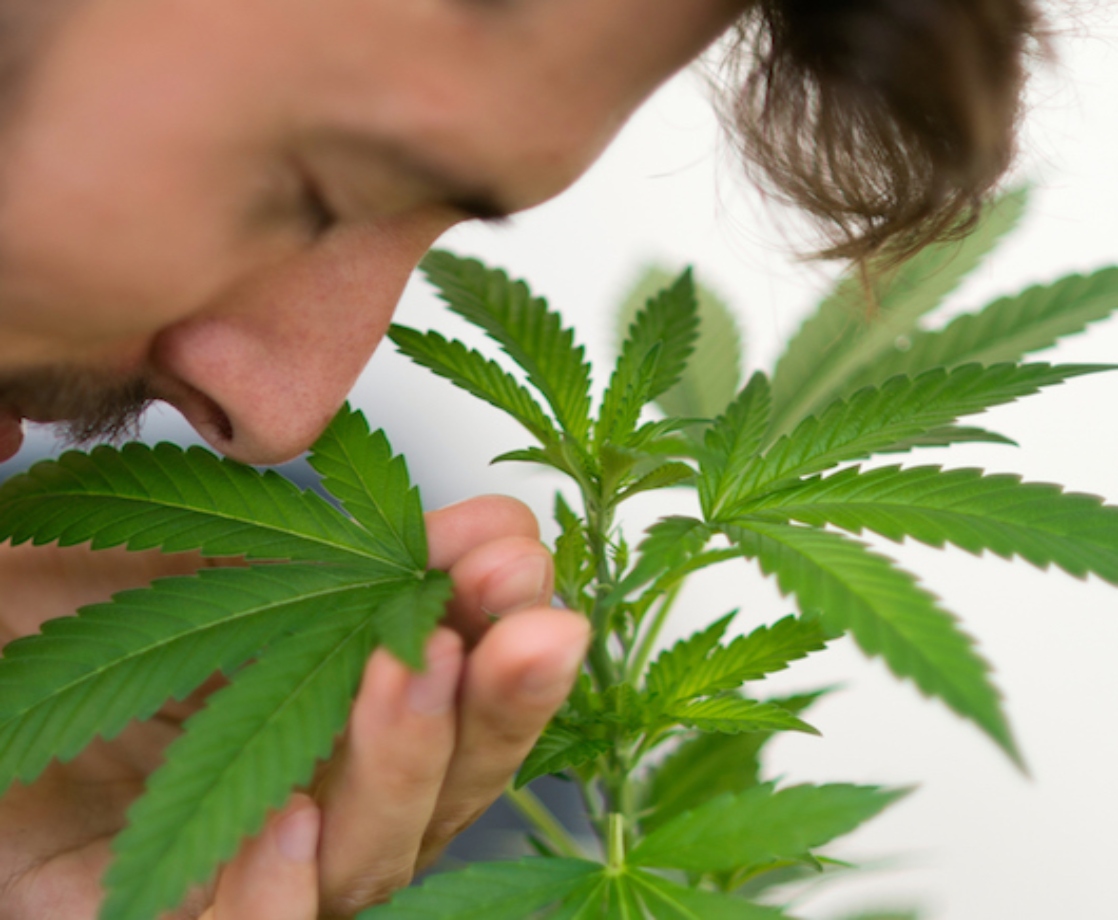Following in the footsteps of Amsterdam, the locale that transformed smoking culture in the ‘70s, the West Coast is blooming with social smoking experiences worthy of discerning foodies and adventure seekers. Think: Hopping on a dab bus headed to a greenhouse in the middle of a winery, or being led up to a rooftop garden at sunset that’s been transformed into a dining room. Paired soundtracks with curated strains and tactile terpene experiences where you can truly “know your plant.” My god — does it get any dreamier?
Good news: The aforementioned experiences are a reality, thanks to Liv Vasquez’s Oregon-based educational dining company, Livvie Smalls Events. As someone who’s spent the past 15 years working in restaurants and hospitality as a chef, consultant, and educator, Vasquez is on a personal mission to change the way people taste, smoke, and experience weed — recreationally and medically.
“We have a beautiful, unique opportunity to get to know the people who make our medicine in this industry,” she said. “We can’t really call the lab technician or pharmacist and ask them if every ingredient in a Lorazepam is ethically-sourced — but this is something we can and should be doing with cannabis.”
Just like craft beer (another beautiful Oregonian institution), the cannasseur market is taking off, as high-minded users seek cannabis with a thoughtful and transparent approach to farming practices, labor, ethics, and so forth. After all, anyone can grow weed in their backyard, but it takes a truly knowledgeable enthusiast to rattle off terpenes in the same way a sommelier can blind taste terroir (Fun fact: Terpenes are inherent flavor profiles and agricultural expressions, and they can even represent the terroir — a French word for “earth!”).
If you’re a self-identified “terpene-extremist” like Vasquez (and me), come ride the flavor wave with her recipe for an infused cherry shrub that’s perfect for your next cannacocktail. And then read on for our interview with Livvie Smalls about why “knowing your farmer” is crucial to the future of cannabis.
.jpg)
Infused Cherry Shrub
From “Smart Infusion: A Basic Guide to Understanding Edibles” by Liv Vasquez of Livvie Smalls Events
Time: 20 minutes
Servings: 8
Dosage: 10mg
Ingredients
– 4 cups Cherries (dark, sweet, pitted)
– 1 teaspoon double-fold vanilla extract, such as Nielsen-Massey
– 1 cup unrefined cane sugar
– ½ cup raw honey
– ½ cup raw apple cider vinegar
– ¼ cup balsamic vinegar
– Ice
– Sparkling water
– 10mg THC or CBD in a water-soluble tincture
Directions
Note: This recipe takes about a week to prepare. So make sure you leave enough time!
Place the cherries and vanilla in a large jar. Add the sugar and mash in with the cherries using a muddler or wooden spoon.
Place in the fridge and let sit for two days, shaking occasionally to help dissolve sugars.
After two days, blend the mixture then pour into a fine mesh sieve, pressing on the solids to strain out the cherries and blend the whole mixture. Place the syrup back in a jar and mix with the honey and vinegars. Place back in the fridge for 5-7 days. Shake syrup before using.
To prepare your mocktails, start with a glass of ice, then add in 10mgs of a water usable tincture, then mix in 1 part syrup to 4 parts sparkling water. You may like more or less syrup, depending on your preferences. Garnish with a lime wedge.
Tip: “Water-soluble” means that it will dissolve in water. If you have an oil-based tincture, you could use it as a base for a sugar or salt rim on your drink.
.jpg)
MERRY JANE: As a cannabis educator, sommelier, and chef, you’re among the pioneers really pushing the cannabis industry to develop higher food, beverage, and service standards that meet the expectations of the mainstream hospitality industry. Can you tell us about your storied journey from becoming a two-time restaurant owner to one of the top names driving culinary canna-tourism experiences in Oregon?
Liv Vasquez: I have been a chef and restaurateur for years, starting culinary school at 16-years-old, then graduating at 18, and going on to help Universal Studios open around a dozen dining experiences for Islands of Adventure and Citywalk. From there, I moved to New York at 21-years-old and helped re-open the iconic rooftop bar at the Gramercy Park Hotel, then opened two restaurants of my own on the Lower East Side by the age of 23. By my early 30s, I decided to move to Oregon and write a food and beverage book about parties right as Oregon was about to transition into recreational cannabis sales. To me, this was a learning opportunity, and I took it.
Around five years ago, I started working in a medical dispensary in Oregon to help them transition into a recreational dispensary. During that time, I started auditing lectures of cannabis researchers from all over the globe and receiving referrals from doctors who specialize in PTSD and cancer research that had patients who wanted to take their health into their own hands.
I quickly realized that Oregon was unique because we weren’t limited in our jargon — meaning we could openly discuss the medical benefits and information about cannabis with non-medical customers. Because of this, we had people coming in with questions from Washington and other states who were limited in how they could talk about a product and its effects. I treated these patients like case studies as I helped them find products and ingestion methods that worked for them and monitored them for almost three years. In 2017, I ended up leaving the dispensary where I was the Staff Educator due to sexual harassment, which really put a spotlight on ethics and safe consumption spaces within cannabis for me.
One of the biggest things happening in cannabis right now is the rise of “seed-to-smoke” a.k.a. the new farm-to-table. Can you shed a little light on the importance of knowing your farmer when it comes to weed?
We have a beautiful, unique opportunity to get to know the people who make our medicine in this industry. We can’t really call the lab technician or pharmacist and ask them if every ingredient in a Lorazepam is ethically-sourced — but this is something we can and should be doing with cannabis.
Hemp and cannabis can work as a bioaccumulator, so it can pull any heavy metals or toxins from the soil and produce it right into the buds or “flower.” Because of this, I check in with the farms and ask them if they test soil for heavy metals. I also ask if they are charitable and what their employment turnover rate is. Most farms don’t get a lot of opportunities to brag about the extra steps that they take to make a quality product.
A lot of people don’t know that you can’t write off charitable donations on your taxes as a cannabis business. So being charitable is usually just out of the goodness of your heart, and most farms don’t or can’t advertise their ethical efforts. So they are usually excited to share what goes into making a kind and clean product.
Everyone is talking about terps. For those who are unfamiliar, can you explain why terpenes are important and what you love about them?
Okay, I may be a terpene extremist! [Laughs]. Terpenes are basically the essential oils of the cannabis plant. Their smell helps determine the effect of the flowers. For example, if your weed smells like lemons, that is the terpene limonene, which can help with mood elevation. During my events, I pass around isolates of terpenes to teach guests about them. I believe that tactile learning with terpenes is so crucial — you need to touch, taste, and smell terpenes to learn about them. I diffuse terpenes into the air and layer terpene isolates into the dishes at my events to manipulate the endocannabinoid system of my guests. I do this so that my guests not only “get high,” but also experience a high that I have designed specifically for them and this event.
As a cannabis activist, education is really important to you — but so are experiences! After all, getting high is supposed to be fun, too, right? Can you tell us about some of the events that you host and how people can find you?
I throw the types of parties that I always dreamed of experiencing as a stoner. In almost every US state, you can only consume within a residence. So, I decided to build pop-up restaurants in spaces that count as a residence. I announce my events on my Instagram page or in my stories. When a guest contacts me, I vet them and provide information. Only after they’re approved will they receive an address and time to where I have built a restaurant for the day, which could be anywhere from dab bus to a greenhouse in the middle of a winery, or even a rooftop garden that I’ve transformed into a dining room. My events are a leap of faith, and afterwards you have this whole new relationship with cannabis.
Let’s talk about the recipe: why do you love it and why does it work?
I love canna-cocktails, so this is a recipe for my infused cherry shrub that you can use to make mocktails and cocktails from my e-book Smart Infusion. Infused cocktails and mocktails are great because they work as a sublingual, which is the best way to absorb cannabinoids because you don’t lose any terpenes or cannabinoids in the digestion process. This recipe uses the infused weed oil on the rim so that you can have a choose-your-own-adventure type of experience by taking or leaving as much as you would like.
Between being an educator and the abundance of weed you have access to in Oregon, you’re probably eons past any dosing disasters — but everyone has at least one good story. What’s yours?
At the first High Noon Brunch that I hosted, I was still serving meat and dairy. I got some duck fat from my friend Sarah, who is a butcher, and infused it with Durban Poison to make a duckfat Pop Tart with apple sage curd filling. They were flaky and sweet, but so rich. After that, I started thinking about the fat absorption of a dish like that. Duck fat is a slower digesting food, making it great for trappers in Alaska because it is slow burning fat — but completely irresponsible for anyone else! The dose that I gave my guests on a Sunday could have had effects that lasted well into mid week if someone has a slow metabolism. From that event forward, I only decided to make dishes that make cannabinoids more bioavailable. So, most of my menus are now plant-based or pescatarian to accommodate more reliable digestion times.
Follow Liv Vasquez on Instagram, Facebook or Spotify where you can find the playlists she uses at her events to pair with specific cannabis strains
Follow Carly Fisher on Instagram and Twitter, and pre-order her book, “Easy Getaways to the Hudson Valley & Catskills” (Countryman Press/W.W. Norton, April 2020)











